Insecticide and repellent: natural alternatives. It's all in nature !
Insects and other small arthropods are part of nature. Most of the time, they are as harmless as they are important to the balance of nature and the health of our plants. Sometimes, however, the invasion of a particular species can cause problems: in these cases, the insects are considered by man to be pests. In such cases, a radical but, as far as possible, environmentally-friendly solution is needed.
The solution could be to use a natural insecticide. These alternatives do exist. Nature offers us a wide choice of natural substances to combat insects. Effective and reliable products are developed from substances of mineral or plant origin. These sustainable solutions are part of an integrated pest management approach that combines prevention, monitoring and treatment.
Even if they are of natural origin, insecticides must be used with the utmost care and always in accordance with the manufacturer's instructions.
Here is a presentation of the main natural insecticides available in our shop.
A quick reminder : what is an insecticide ?
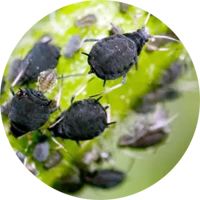
By definition, an insecticide is a product in the pesticide family, designed to control insects, whether adults, larvae or eggs, crawling or flying. It is generally understood in its broadest form, i.e. with the property of controlling, repelling or killing all so-called harmful insects, including arthropods (which are not insects) : spiders, mites, etc.
Some insecticides are specific to a given species. Others attack all insects without distinction.
A distinction is made between insecticides (designed to kill) and insect repellents, which are products used to scare insects away.
Most chemical insecticides on sale have a significant impact on :
- the environment and biodiversity : by eliminating insects, they also affect the birds and mammals that eat them, natural predators whose disappearance or rarefaction can destabilise an entire ecosystem. The insects targeted may also themselves be predators of another, much more harmful species, which ends up developing freely. The use of insecticides has also been blamed for the decline in the populations of pollinating insects that are vital to biodiversity, from bees to butterflies: without them, plants cannot reproduce. The famous neonicotinoids, in particular, are among the most widely used in the world and are thought to play a major role in the collapse of bee colonies.
- Health : This information is no scoop! The use of, or exposure to, insecticides has potentially serious effects on human and animal health. Repeated exposure could cause neurological, cardiovascular, respiratory and dermatological disorders, and increase the risk of cancer, neurodegenerative diseases, hormonal disturbances and foetal malformations in pregnant women. Although their effects are difficult to quantify, a large part of the scientific community agrees on the dangers of pesticides in general, even at low doses. Even with targeted use, insecticide residues have been found in the vast majority of crops grown for human consumption. They can also contaminate food-producing animals, drinking water supplies to the point of rendering them unfit for consumption, or simply the air we breathe.
But there are also insecticides of natural origin that are authorised and widely used in organic farming and in our gardens. These are the ones we will be describing in this dossier.
Pyrethrum against insects
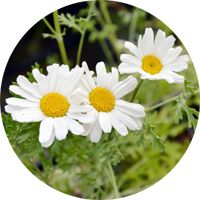
When it's not being synthesised in a laboratory, pyrethrum is a plant insecticide extracted from the dried flowers of the chrysanthemum plant. This insecticide is also known as Dalmatian pyrethrum (Tanacetum cinerariifolium). Originally from the Adriatic coast, the plant has spread much more widely due to its insecticidal properties, particularly in Africa, where certain countries such as Kenya and Tanzania have turned it into an economically profitable crop. Be careful, however, not to confuse it with African pyrethrum (Anacyclus pyrethrum). It also contains pyrethrins, but in lower proportions.
The term "pyrethrum" refers to the powder extracted from dried chrysanthemum flowers, while the term "pyrethrins" refers to the six active compounds contained in this powder.
Its repellent and insecticidal effects have been known for decades and it is widely used in organic farming. This active ingredient is effective against a wide range of insects: cockroaches, bedbugs, flies, mosquitoes, textile moths, food moths, ants, silverfish mites, hornets, lice, cockroaches, etc.
Pyrethrum extract can be used on its own or in combination with another molecule with a lethal effect and/or with a synergistic agent that significantly increases its lethal action.
Pyrethrum extract acts on the nervous system of insects, causing them to suffer lightning muscle paralysis. It is one of the most powerful knock-down agents.
To find out more about pyrethrum extract, take a look at our dedicated file → See here.
Margosa extract against insects
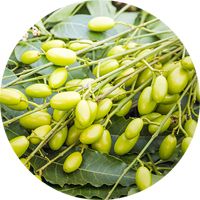
Margosa extract (or Neem extract) comes from the seed of the Margosa tree, also known as the Neem tree.
It is azadirachtin, the active molecule extracted from Neem oil, that produces the effects on insects. Margosa extract is obtained by a high-tech process (international patent) using carbon dioxide in a supercritical state as the extraction agent.
Margosa extract is effective against a large number of phytophagous insects and mites: in particular whiteflies, caterpillars, aphids, thrips, weevils, webworms, mealybugs, mites, in particular red spiders, mealybugs, a large number of diptera and hymenoptera, as well as all wood-eating insects.
Azadirachtin is the most effective biocide on the market. This natural pesticide is used successfully in agro-ecosystems, especially as it has no impact on the microbial organisms present in the soil. In fact, the WHO and the United Nations Environment Programme recommend its use.
It acts at several levels in the physiology of these insects :
- It paralyses the digestive tract, meaning that the insects can no longer digest what they have ingested: they stop feeding and die.
- It stops larvae moulting, so they never reach the adult stage and die.
- It inhibits sexual reproduction by blocking mating.
The effects of Margosa extract on parasites are not immediate. It may take 2 or 3 days for the insects to die or flee.
To find out more about Margosa extract, take a look at our dedicated file → See here.
Geraniol against insects
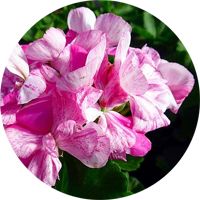
Geraniol is a volatile, fragrant molecule naturally present in essential oils derived from plants.
Geraniol is known in particular for its larvicidal and ovicidal properties. It is an active substance used to formulate repellent and insecticide products that are effective against a wide variety of insects and mites such as :
- Mosquitoes, houseflies, blowflies and other diptera, wasps, hornets,
- Cockroaches, earwigs, crickets, ants,
- Coleoptera, Lepidoptera larvae,
- Lice, fleas, dust mites, aphids
- Ticks, etc.
Geraniol in aqueous solution acts in 2 ways on insects, whatever their stage of metamorphosis (egg, larva, adult): by suffocation and by dehydration, acting on the chitin (the insect's protective envelope).
Geraniol is one of the best larvicides and ovicides on the market. It is therefore a product used naturally for preventive flea and tick control in pets, or to reinforce the insecticidal action of a product, or even as a repellent against haematophagous (blood-feeding) insects, in the form of a protective bracelet worn on the wrist.
To find out more about geraniol, take a look at our dedicated dossier → See here.
Diatomaceous earth against insects
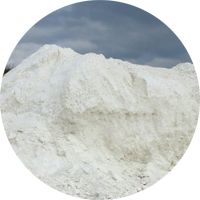
Diatoms are unicellular micro-algae enveloped by an external skeleton composed mainly of amorphous silica (transparent and rigid). Fossil deposits of diatom skeletons are known as diatomaceous earth.
Diatomaceous earth is an inert product, free from known harmful substances. After grinding, it has the appearance of talcum powder. Thanks to the specific surface area of its grains and its siliceous skeleton, diatomaceous earth has a number of very interesting properties :
- High absorption capacity: up to 150% of its weight in water.
- The ingestion of silica particles by insects causes lesions in their digestive tract.
The fineness and hardness of the silica particles collected by the insect's bristles cause lesions on its limbs or carapace (walking on diatoms is like walking on broken glass!). This causes the insect to lose body fluids, leading to death from dehydration after a few days. The absorbent properties of diatomaceous earth help this process. As it is totally inert, it provides long-term protection for treated areas, both indoors and out.
Today, diatomaceous earth is probably the safest and most effective insecticide for treating crawling insects in the home. Diatomaceous earth should be spread on the places where insects pass through, but also on their shelters: attics, nooks and crannies, skirting boards, cracks in walls, and generally all types of interstice where pests could take refuge. With its long-term action, diatomaceous earth remains effective as long as it is not affected by damp. In the home, it can be used against a large number of insects as long as they are crawling: bedbugs, cockroaches, silverfish, fleas, red lice, ants, etc.
Although some insects in stored goods may become less sensitive to this biocide over generations, no resistance is known to date. It has an immediate barrier effect and can be used over the long term for both preventive and curative purposes. This insecticide is non-selective. It should therefore be used with care, as it is likely to cause the death of non-target crawling insect species.
To find out more about diatomaceous earth, take a look at our dedicated dossier → See here.
Spinosad against insects
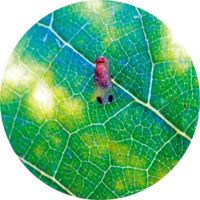
Spinosad is a fermented product derived from a mixture of two toxins (spinosynes A and D) secreted by a soil-dwelling bacterium : Saccharopolyspora spinosa.
Spinosad is not very toxic to mammals, birds, fish and crustaceans. It is, however, highly toxic to bees. Direct application and spraying of this substance near bees and their colonies, as well as near crops in full bloom, should therefore be avoided. It should be used as part of a rational plant protection strategy. This strategy harmoniously combines the priority given to natural beneficials in the garden with a minimum of localised treatments where insects are present, with the aim of re-establishing a balance in favour of natural beneficials.
Spinosad acts as a neurotoxin and is active both by contact and by ingestion, although ingestion is thought to be 5 to 10 times more effective. Its effects are rapid, which is relatively unusual for a biological product. Insects are paralysed and stop feeding. In general, Spinosad is effective against caterpillars, flies and thrips, as well as certain species of beetles, grasshoppers and ants. However, it is not effective against sucking insects or mites (e.g. aphids, whiteflies, leafhoppers).
While the effects of spinosad are rapid, it has little after-effect. This is very good news. It allows auxiliary fauna to re-establish itself quickly after a treatment. On the other hand, this low residual effect means that treatment must be carried out at the most opportune time to ensure optimum efficacy. Evening spraying seems to be the best choice for two reasons: it is in phase with the consumption patterns of defoliating caterpillars and beetle larvae, which are often nocturnal, and it allows the suspension deposited on the leaves to dry more slowly.
Cold against insects
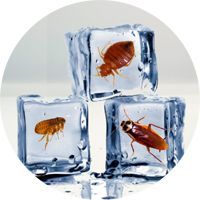
The freezing method is still an excellent way of combating insects in general. At between -18°C and -25°C, these low temperatures will destroy eggs, larvae and adult insects in 48 to 72 hours, depending on the species. Contaminated objects or textiles can easily be treated in this way.
A new generation of cold-acting insecticides now exists.
The cryonics method, for example, is becoming increasingly popular among professionals, particularly in the fight against bedbugs. This process involves spraying either dry ice (a solid form of CO2) at -78°C or liquid nitrogen at -196°C onto areas infested by bed bugs (mattresses, beds, furniture and clothing). The exposed areas are then cooled instantly, evenly and uniformly. The pest has no time to escape and dies immediately.
Deep-freezing is another method proposed by professionals for eliminating insects that have taken up residence in your furniture or other bulky objects. Deep-freezing starts at -30°C. This is the temperature of cold rooms, a temperature at which the cold spreads evenly and rapidly, leaving the insect no chance of survival, even if it is frost-resistant. Wherever the insect has taken refuge, it is doomed to certain death.
Finally, cold paralysis insecticides are another useful innovation for controlling all types of insects: wasps, hornets, cockroaches, spiders, ants, fleas, bedbugs, flies, mosquitoes and moths. They come in aerosol form. These insecticides usually contain a high-precision formula based on liquefied gases (butane, propane). The exit temperature is around -45°C. This means that the insect is instantly paralysed and frozen on contact. It can be used in kitchens and food environments as well as textiles and mattresses. In addition to their lightning-fast elimination, these paralysing insecticides have the advantage of being odourless and leaving no traces or stains on surfaces. On the other hand, as you will have realised, their formulation, which contains no active insecticide substance, is not persistent. Cold paralysis insecticides are ideal for use in sensitive areas such as bedrooms, on textiles and mattresses.
Thuringian bacilli against insects
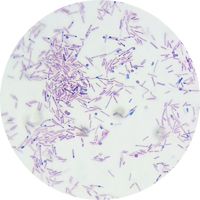
Thuringian bacilli or Bacillus thuringiensis or more simply BT are bacteria that are found everywhere in nature in small quantities: in the air, in water, in the soil but also on the plants themselves. These bacilli produce a molecule called thuringiensin. These insecticidal bacteria are the most used in the field of organic farming.
There are several different strains. Bacteria therefore attack one type of insect or a single species without directly affecting other insects. There are therefore strains that only attack Boxwood moth caterpillars, Pine Processionary caterpillars, and even mosquito larvae, to name but a few examples. Bacillus thuringiensis can also be used for certain flies, but also beetles such as the Colorado potato beetle and the lily leaf beetle, and of course, butterfly caterpillars such as moths, tortrixes, leaf miners, moths, moths or codling moths .
The effect is limited in time, but radical! Thuringian bacilli produce endotoxins that destroy insect gut cells, while spreading the bacteria throughout the body, creating widespread infection. The insect can no longer feed and dies shortly. The bacillus will continue to "consume" the corpse thereafter.
BTs have the advantage of degrading very quickly by UV rays, heat but also simply in water. The persistence of this type of treatment is therefore almost zero if we refer to current studies. However, Bacillus thurigiensis are not completely safe for warm-blooded animals. We must therefore remain cautious and target.
Did you know ? Some GMO plants have been genetically manipulated to produce the BT toxin themselves and thus create their own insecticide directly within their tissues.
Animal insecticides - Garden auxiliaries
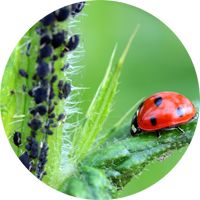
Encouraging biodiversity in the garden means creating an environment conducive to a balance between a varied number of plant and animal species that contribute to life in the garden and help us fight against harmful organisms. The main useful species are: spider, weasel, golden beetle, ladybug, bat, grass snake, toad, lacewing, parasitic wasp, frog, hedgehog, lizard, shrew, bird, raptor, bug, hoverfly. Several solutions are possible to attract these auxiliaries, such as the constitution of diversified country hedges, beds of shrubs, or the construction of shelters.
The main auxiliary insects :
1 - Ladybugs, for example, are renowned for devouring aphids, and widely used in organic farming. It is the larva that is the most voracious since in a day it will eat 150 aphids, the adult only consuming 15-20.
2 - The lacewing : The larva feeds on aphids. The adult according to the species feeds on insects or nectar. Immobile insects such as aphids, cochineal larvae, mites, chiggers in the lawn, whitefly larvae and eggs. For tomatoes that suffer the bites, they become discolored and will be more susceptible to disease. During its development, a lacewing larva can eat 200 to 500 aphids, and up to 10,000 mites. Associated with other auxiliaries (ladybugs for example), lacewings are not only good control predators, but can even participate in the complete "cleaning up" of pest populations. On the other hand, these fragile insects fear rain and wind. They will need shelters such as ivy climbing on a non-fragile support, not risking being smothered.
3 - The hoverfly : Looks a bit like a bee or a 2-winged wasp, 2 cm long and is characterized by hovering. The larvae feed on black aphids, various insects, scab type fungi, rust, the adults being pollinators. Hoverfly larvae eat 80% of garden pests.
Hoverflies, lacewings, ladybugs (in the absence of aphids) are nectarivorous insects, hence the need to plant various nectar-producing flowers all year round, as the development period for aphids is limited.
4 - The cantharide (orange beetle) : Comes out at the end of April at the beginning of May on the umbelliferae (fennel, wild carrot, dill, fennel, etc.) rather white flowers where they feed on nectar and pollen: having a very short proboscis, it is more easy to feed on these flat umbels. Larvae living in the soil are formidable predators for small underground pests. They like places to hide, mulch at the foot of trees, heaps of dry leaves, pieces of wood or stones. A hedge will also be a good refuge against their predators as well as for many other auxiliaries.
5 - The gendarme : Stinging gregarious insect with a soft body, it feeds on the eggs of aphids and other insects, mealybugs. Also involved in the decomposition of plants. Will be attracted by mallows, hibiscuses, a lime tree. In winter, leave the dead leaves fallen at the foot of the shrubs to give them refuge.
6 - The ground beetle : A very fast insect, it has a fluo-coloured, bluish-green, black shell and is provided with mandibles with which it catches its prey. Very large predator, it eats white grubs, insects emerging from the ground in the spring such as codling moth, snails, slugs. It settles in the plant mulch, shelters there but also likes beer. So be careful when using the slug trap.
Manure, infusions and decoctions against insects
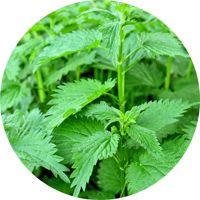
Some plants in our garden can help us in our fight against insects. All you have to do is prepare manure, decoctions or infusions depending on the plant and the desired effect.
Sewage
Fern manure is an insecticide and repellent for aphids, leafhoppers, wireworms and even slugs. Manure can be made from eagle fern (Pteridium aquilinum) or male fern (Dryopteris filix-mas). It is then used pure. In other cases, it can be diluted to 10%. Fern manure is obtained by fermenting 100 g of plants per liter of water, to be adapted according to your needs.
We can also cite nettle, wormwood, tansy or rhubarb manure, which have very effective insect-repellent properties.
The infusions
The infusions are simple to make but effective. Garlic infusion protects against leek moth and carrot fly, chamomile infusion against aphids, codling moth and imported cabbageworm.
The decoctions
You can make decoctions using several different plants, but for an insecticidal or repellent effect, here are the most effective: garlic decoction against peach leaf curl; decoction of tansy as a repellent against pierids, moths, flea beetles and aphids; decoction of lavender against ants, decoction of lavandin and clove against wasps and mosquitoes; and the decoction of wormwood as a repellent against ants, aphids, codling moths and pierids.
Vegetable oils against insects
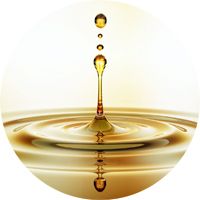
Some vegetable oils have extremely interesting properties to fight against insects.
Coconut oil : Coconut oil itself is not an insecticide. On the other hand, the specific fatty acids that compose it are at the origin of this effectiveness against blood-sucking insects. Among them are lauric, capric and caprylic acids as well as their corresponding methyl esters. To prove this, scientists locked fatty acids in capsules containing a starch-based preparation. Following numerous tests on cattle for more than 96 hours, this natural preparation has proven to be protective against mosquitoes. Even more surprisingly, the insecticides were only 50% effective compared to 95% for the natural remedy based on coconut oil. Indeed, conventional insecticides lost their effectiveness after three days while coconut oil was protective for about two weeks. Coconut oil is now also found in formulations against head lice. The coconut oil then forms an occlusive film which asphyxiates the insect.
Sesame oil : Vegetable sesame oil has a biochemical action. It also has a technological action with the insecticidal active ingredient of a formula. It slows down its evaporation, increases its persistence and the effectiveness of the product by disturbing gaseous exchanges (breathing) as well as the function and structure of the cell membrane. Its toxic action on insects is more physical than chemical. Sesame vegetable oil contains natural molecules close to PBO (piperonyl butoxide: a synthetic synergizer widely used in conventional insecticides) in terms of structure.
Rapeseed oil : Very effective on the eggs and larvae of many insects but also on aphids, mealybugs, mites and whiteflies. Its action is simple: it coats the parasites with a lipid film, which, asphyxiated, can no longer move or feed. Their death by suffocation occurs quickly after treatment. It is a purely physical action. Effectively controls all stages of development (eggs, larvae, adults) of the targeted insect pest. Non-toxic to pets and humans, safe for the environment. Usable in organic farming.
Essential oils against insects
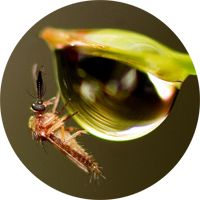
Essential oils can make life difficult for insects. They are composed of various molecules, such as aldehydes (citrals, citronellal), monoterpene alcohols (citronellol) and phenols (eugenol). At present, these natural substances are the subject of much scientific research, with the aim of keeping away or regulating certain populations of insects. In hot and humid regions, the stakes are high. We present below those that seem to us the most common and effective.
Lemon Eucalyptus : Lemon eucalyptus oil (also called Eucalyptus citriodora) is a plant extract concentrated in P-menthane-1,8 diol (also called Citriodiol®). This substance has a strong repellent effect against many pests (mosquitoes, ticks, lice, flies, snakes, small mammals, etc.). Its activity is comparable to the 3 main substances on the market (DEET, Icaridin and IR3535™). Lemon eucalyptus oil is the only substance of natural origin that provides a repellent and significantly long-lasting effect.
The citronellal and citronellol components of this essential oil help keep insects away and kill certain mosquito larvae. It is even more concentrated in citronellal than Lemongrass, which increases its repellent effect. In addition, this oil is an excellent anti-inflammatory which at the same time helps to soothe insect bites.
Lemongrass : Lemongrass essential oil contains citronellol and geraniol, two naturally active mosquito repellent molecules. It disrupts the nervous system of insects that prefer to stay away. The lemony smell that emanates from it strongly displeases them. Its calming and soothing properties will make it your ally for mosquito-free nights. Last advantage: it purifies the ambient air thanks to its content of terpene alcohols.
Lavandin : Lavandin is known for its very characteristic scent, this smell is not appreciated by insects, particularly flies, moths and wasps.
Lavander : Lavender quickly relieves insect bites, it has analgesic and calming properties thanks to the linalool it contains. But, this essential oil is also well known for its repellent activity.
Peppermint : Menthol, an antiviral and antibacterial component, present in peppermint essential oil is very effective in scaring away wasps in particular. The cold effect caused by the application of this oil on the skin also helps relieve an insect bite.
Rose Geranium : Another essential oil well known for its mosquito repellent properties is Rose Geranium essential oil. Like Java Lemongrass, it is also composed of geraniol, a molecule that has significant repellent properties. And not content to repel mosquitoes, it also relieves in case of bites, by facilitating healing. Rose geranium essential oil can be used by pregnant (over 5 months) and breastfeeding women, as well as by children from 6 months.
Basil : Among the properties of the essential oil of Basil that must be remembered, we find its antiparasitic action. In addition, its constituents methylcinnamate, methylchavicol, ocimène, cineole and linalool have a recognized insecticidal action.




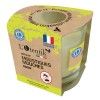
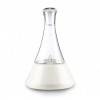

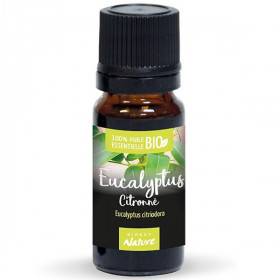
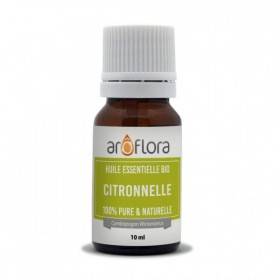
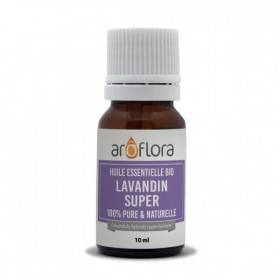
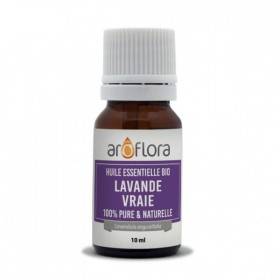
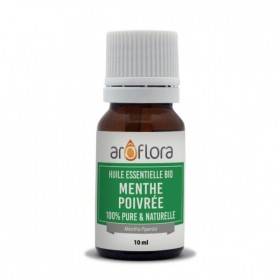
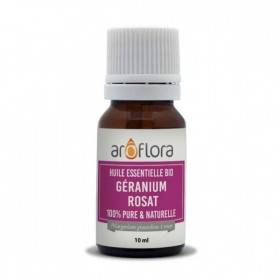
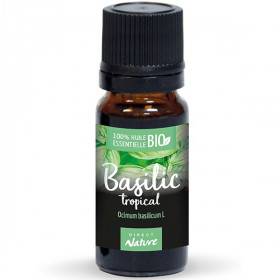
Customer reviews
Bon produit , envoi rapide.<br /> <br /> <br />
Christine
Colis bien arrivé. Emballage remarquable. Diffuseur très joli, très efficace et peu bruyant avec de la couleur qui change. Très satisfaite de la commande.
Sabrina
Livraison rapide , produits de qualité, je recommande Penn'Ty Bio.
XX
Fiable, et très bons produits , Service après vente efficace et sympathique.
Vilma V.
Très bonne adresse où l'on trouve des alternative aux produits chimiques notamment contre les insectes. Le service client est également de très bons conseils.
ck
Très satisfaite par Penn ty bio. En effet, suite à un produit défectueux ( housse matelas) , j'ai aussitôt reçu un bon de retour pour renvoi gratuit en colissimo et ai reçu la nouvelle housse dans les 48 h, avant même le renvoi de la première housse. Merci pour la réactivité et la confiance de cette entreprise.
dominique B.
Je vous remercie de votre professionnalisme et de votre réactivité.C'est loin d'être toujours le cas lorsque l'on commande sur internet.
Gaëlle
Très bons produits efficaces.
XX
Un grand merci pour cette commande envoyée très rapidement. Je recommanderais votre site
Elise
Produits performants. Très satisfaite de vos services.
XX
Maryse
Merci pour cette première commande, envoyée très rapidement, et dans un petit colis, avec frais de port très raisonnables.
Valérie O.
Colis parfaitement emballé et produits conformes. 1 des produits était très fragile et est arrivé en excellent état, merci :o) Pourquoi achetez à l'étranger alors qu'on a de si belle s entreprises en France? Tarifs identiques ou moins chers que chez Amazon ;o)
Stéphane C.
Super efficace !!!
xx
Bon produit. Merci Penn'Ty Bio. Un seul passage dilué à 5% et les puces ont disparus. Il en restait deux ou trois qui ont dû se perchés pendant le traitement mais sinon c'est performant.
Axel
Merci beaucoup le colis est arrivé à la poste hier et je te retire aujourd'hui Merci pour votre efficacité et votre rapidité
Ingrid
Louise
J’ai découvert cette société en faisant une recherche sur Internet pour trouver un insecticide contre les sclérodermes. Je ne peux pas encore juger l’efficacité de chacun des produits par contre je suis très satisfait de la rapidité et de la qualité d’expédition, ainsi que du sérieux de la société. J’ai même reçu un petit échantillon est un mot personnalisé j’ai trouvé ça très sympa! Merci beaucoup et bonne continuation pour votre société que je recommande déjà.
BJ79
Juste un petit mot pour vous remercier du message accompagnant mon colis ! Je croise les doigts pour que les produits marches mais entre-temps, je voulais vous remercier et en profiter pour vous souhaiter à mon tout un joli printemps.
Rose B.G
Très satisfaite de ma commande. Emballage soigné et envoi rapide. Merci beaucoup pour votre professionnalisme !
Sophie
Livraison rapide et soignée. J'utilise les produits bio qui sont de très bonnes qualités. Un savon m'a été envoyée par erreur à la place de celui commandé et il m'a été remplacé très rapidement. Bravo pour leur réactivité. Je recommande fortement ce site.
Liliane
Je suis arrivée sur votre site en cherchant un diffuseur que je viens de commander, mais je voudrais vous dire que votre site est très intéressant, bien fait. Vos dossiers sont enrichissants merci
Joelle
Très bons produits je les recommande.<br /> Merci à Pennt'ty Bio pour tout, aussi bien pour les commandes et les emballages.<br /> Bravo Pennt'ty Bio.
Bernadette G.
Je ne connais pas encore tous les produits mais contente de ce que j'ai commandé. En revanche un peu cher quandmême ce qui me limite.
xxx
Personne disponible, de très bon conseil suite à des punaises de lits dans mon habitation, les produits sont efficaces car depuis aucune punaises et la vie à repris son cours ... merci pour tout
Nathalie
Super, livraison rapide, suivi très rigoureux, site de confiance, très sérieux à recommander... Merci pour tout.
Bernard
Commande facile, livraison impeccable et produits fiables. Merci.
Isabelle
Bon service et bon produits
Odile R
Merci et surtout, continuez, c'est rare de trouver sur internet une relation aussi personnalisée sur un mode aussi agréable.
Sabine
Super, envoi rapide,bien protégé et petit cadeau !
xx
Service de qualité, suivi rigoureux, et rapidité au rendez-vous. Les produits sont très fidèles à leur description et pour un coût serré. A recommander fortement.
JACKY
Explication, commentaire et livraison en un temps record, tout était parfait, même le petit mot de remerciement écrit à la main ! Merci beaucoup
Monique S.
Rapidité, emballage nickel et écologique, mot de remerciements personnalisé, produits au top....j adore....je suis une nouvelle cliente conquise. Un grand merci...
Hélène P.
Excellent!! Commande passée le lundi, reçue le mercredi!!! Les produits sont en plus de super qualité !
MADELINE
Pennty bio prends le temps de renseigner et donne de très bons conseils.<br /> Les produits sont emballés soigneusement et la préparation des commandes hyper réactive. Je recommande les yeux fermés !
Mattloumag
Très satisfaite des délais, les produits sont bien emballés et le petit mot sympathique est fort agréable!<br />
Sylvana
Service très réactif, emballage soigné , livraison rapide. <br /> Rien à redire . Continuez !!
Sophie
Cela fait plusieurs fois que je commande chez Penn'Ty Bio et je suis toujours satisfaite de la qualité des produits et de la rapidité d'expédition. Je recommande ce site !
Ghyslaine
Produits livrés rapidement dans un colis non surdimensionné, les produits sont conformes à la description. Je recommande vivement ce site très bien fait !
Hervé
trés satisfaite de ma commande,( produit, et livraison,rapide ) MERCI
Danièle M.
Comme d'habitude, envoi soigné, produits performants, Merci.
XX
Je tenais à vous remercier pour la commande que je viens de recevoir ce matin. Merci beaucoup et je n'hésiterai pas à recommander sur votre site.
Sandrine
Excellent site rapide et efficace. Descriptif intéressant.
XX
ANNE
Envoi rapide et soigné, produits efficaces et réponse rapide à mes questions. Je recommande.
xx
clair net précis. merci
jannick
Je suis cliente depuis de nombreuses années. Toujours satisfaite du site, des produits et de la livraison.
martine O.
Livraison rapide et bien emballé. Petit message manuscrit qui fait plaisir :)
xx
Super produits accueil plus que parfait gentillesse. Livraison au top merci beaucoup
Christiane
Impeccable.
Christine
Correspond à mes attentes
Henry
J'adore ce site qui fait un vrai travail de sélection de produits que je ne trouve pas ailleurs et sur une large gamme. Je recommande.
Veronique G.
Cliente depuis plusieurs années, j'apprécie toujours ce site. Meilleures salutations.
France
J’ai bien reçu le nouveau diffuseur fonctionnel après essai et je vous remercie pour votre confiance et votre rapidité sur le traitement de mon problème. Ce n’est pas tous les jours que l’on voit un SAV aussi efficace !
Florent
Juste ce petit mail pour vous dire que j'ai bien reçu votre colis et que mon patron est enchanté ! Ca embaume les huiles essentielles dans le bureau et... ça ne fait pas de bruit ! Encore un grand merci pour votre gentillesse et votre souplesse commerciale.
Sonia
Parfait.
Philippe
Très bien !
XX
Très bien , bon produits, La prochaine commande avec plaisir, livraison très rapide.<br />
Rainer
Merci et bravo pour la qualité des produits et du service toujours aussi efficace et performant.
Annick P.
Livraison en temps record à l'adresse indiquée en France puis départ dans l'océan indien. Reception des produits en quinze jours à l'autre bout du monde : ravie. Je vous laisserai les avis produits une fois utilisés. Le site est très bien fait et très agréable à utiliser. Le petit mot à la main dans le colis humanise la transaction, je l'ai apprécié. Je pense que vos produits sont très utiles et je vous souhaite une belle réussite et sur la durée.
Sylvie D.
Bon produit, efficace et laisse une odeur plutôt agréable. Expédition rapide, emballé avec soins. Je recommande
Mary
Très satisfait de Penn'Ty Bio : choix étendu,prix raisonnables délais de livraison rapides.
xx
Toujours parfait, livraison, emballage, délai et gentil petit mot personnel pour me remercier de ma fidélité.
XX
Livraison très rapide et produits bien emballés.
Catherine
Livraison très rapide. Notice livrée avec les produits ainsi qu un petit mot très agréable. Produits très efficaces, avec de l huile de coude, on en vient à bout. Le produit concentré nous a permis de tout éliminer. Par précaution, nous avons tout de même utiliser le spray. Dans une pièce, nous avons utilisé le fumigène. Pour les animaux, la mousse semble efficace. Dans quelques jours nous ferons le shampooing et plus tard les pipettes. Mais franchement après avoir utilisé d autres marques qui ne fonctionnaient pas, nous sommes ravies et nous recommandons ces produits. Merci
Virginie C.
Merci à Penn'Ty Bio pour la qualité des produits, la réactivité de l’Équipe et le petit mot attentif qui accompagne les colis. Votre site est précieux !!
Veronique B.
Je vous remercie beaucoup de m’avoir fait profiter d’un acheminement par Colissimo alors que rien ne vous y obligeait, sauf votre conscience professionnelle, chose rare de nos jours et qu’il ne faut jamais manquer de souligner.
Cécile
Site intéressant. Je l'ai découvert, en fait. Produits ménager éco-responsable. Bon pour la maison et non agressifs. Merci.
Mydiadao
Site très réactif livraison rapide le produit Stop tique et puce est parfait sauf le pulvérisateur.
Danielle B.
Un diffuseur plus de 80 M², avec huile essentielles eucalyptus, vraiment formidable, on respire mieux et çà sent super bon. Le matin 1 heure, et le soir 2 heures. De jolies couleur, et pour les fêtes une jolie ambiance. Bravo.
PATRICK
C'est extrêmement délicat de votre part d'avoir fait diligence. Je ne manquerai pas de recommander votre site et de souligner votre gentillesse. Encore merci
Michel
Au fil de mes commandes (j'en suis à la 5 ou 6ème) décidément, du sérieux et de l'écoute ! chaque fois que j'ai eu un petit problème: contact immédiat, réponse immédiate, et tir rectifié illico ! Dans le top 5 de mes sites internet !
Vincent
C’est la première fois que je commande sur ce site et pas déçue livraison rapide de ce produit que l’on ne trouve pas partout. Je recommande
Patrick
Bonjour, j’apprécie depuis longtemps votre travail : la qualité de vos informations et des produits que vous vendez.
Frederic
Livraison très rapide et produits intacts à l'arrivée grâce à un emballage impeccable.
Etta
livraison rapide, produits bien enveloppés avec juste un petit bémol : pour l'imperméabilisant dont le couvercle n'était pas bien fermé.
Alain
bravo pour votre réactivité et la qualité des produits
Annick P.
merci pour le suivi de ma commande et les mails par lesquels vous m'avez tenu informée.
Zoé
Très satisfaite de ma commande chez Penn'ty bio. Site très détaillé, produit reçu rapidement, message manuscrit très sympathique. Je recommande !
XM
Pennty Bio? Einfach genial. Super rapide , bon produits, super service-livraisons. Je vais recommander bientot =)
xxx
J'ai toujours été satisfaite de mes commandes chez Penn'ty bio. Rapide efficace. Surtout les caractéristiques des produits est claire et complète. et le site contient beaucoup d'informations sur les différentes gammes. Merci pour votre travail et votre activité.
XX
Les produits sont de bonne qualité. Leur prix est raisonnable. Ils sont livrés rapidement, et en bon état.
XX
Très bon site, très sérieux je recommande, produits de qualité et service après vente au top, de plus livraison des plus rapide et produits très bien emballés, tout est parfait
virginie
Sav rapide et disponible. Au top
Severine
2 commandes à mon actif et jamais déçue. Vous avez gagné une cliente régulière :) Merci pour votre sérieux et le contenu bien rempli de votre site ! c'est super d'avoir une description hyper détaillée de chaque produit.
clara
Bon site, fiable, rapide et efficace.
Leo L.
On ne peut pas toujours faire confiance à des sites de ventes sur le web, mais sur Penn'Tio, j' y viens les yeux fermés. Excellente communication avec le service clientèle, un suivi sérieux. Je remercie chaleureusement toute l' équipe.
Sergine T.
J'ai bien reçu mes articles et je vous remercie pour la livraison rapide et impeccable !
Françoise
Tout est parfait de la commande à la réception. Commander jeudi et reçu samedi. Et très contente de mon achat . Je recommande
Nadege M.
Merci pour votre geste que j’apprécie.<br /> Cela fait plaisir de retrouver l’esprit commerçant de proximité chez un vendeur en ligne. Je surveillerai attentivement cette nouvelle livraison.
Philippe
Bon produit mais frais de port un peu cher.
Marie Paule
Très bons produits, service rapide et de qualité, rapport qualité/prix intéressant. Je recommande vivement.
Alain
J'ai reçu mon colis hier. Merci de vos démarches,
Sam
Tout etait parfait, produit,prix,delai<br />
Marco
Everything was very nice ! Keep handling your customers likes this!
xxx
Merci pour votre envoi : rapidité, ponctualité, information de suivi du colis etc. Vraiment du bon boulot.
E.G
Parfait comme site, commandes faciles à faire et livraison rapide !
Cindy
JM
Très satisfaite, merci.
Christine
Site pratique, compétent, prix corrects. Un envoi très rapide, et je dirai "parfait".
Greg
Un grand merci pour votre professionnalisme et la qualité de vos produits. Longue vie à votre site.
XX
Site clair, envoi rapide, marchandises bien emballées, et un petit mot charmant!
SM
Très bon produit facile en entretenir, pas cher.
XX
Client depuis des années Produits de qualités et surtout qualité de service.
XX
Infestés de puces de parquet, le produit a agi en moins de 24 heures. Livrés en tout autant de temps. Le seul produit qui ait fonctionné et en plus archi cool pour la nature.
Nicolas
j'ai reçu mon colis aujourd'hui, merci c'est très rapide et sérieux.
Nathalie
Je vous remercie pour vos services. C'est très agréable d'être informé de la sorte.
Anthony
Parfait !
Mireille
Site très sérieux et personnel vraiment agréable. Envoi rapide. C est parfait !
Ingrid
Livraison express. Colis toujours aussi bien préparé (cales, flocons, adhésif sur les bouchons qui risquent de couler). Bravo pour votre professionnalisme.
Isabelle
Cliente fidèle depuis plusieurs années, je ne peut que recommander ce site. Tout est parfait. Tous les produits au top, rapidité d’envoi, gentillesse, allez y les yeux fermés vous ne serez jamais déçus.
Marité 06
Tout est parfait : la qualité des produits, la rapidité d'expédition, la qualité du colis. Je suis enchantée et resterai fidèle à ce site.
Dominique
Entièrement satisfaite.
Ch. D.
Content des produits achetés, reçu rapidement et bien emballé. Merci.
XX
Tout à fait satisfait de la qualité de la livraison ainsi que du produit commandé.
Régis
livraison rapide ,prix raisonnable , produits super efficace j'ai vite calmé mes douleurs lombaires ...enfin soulagée . Merci pennty bio
JEANNINE
Un grand merci pour la qualité et la rapidité de votre réponse.
Tony
MERCI au personnel à l’emballage !!! Ma dernière commande était super bien emballée. Elle a résisté aux (épouvantables) chocs subis pendant le transport. Merci
Veronique
Commande bien reçue . Je suis très satisfaite Merci pour votre sérieux
LILIANE
Sav très réactif et efficace suite à avarie durant transport. La livraison du produit en remplacement du colis défectueux à été particulièrement rapide. Merci.
Valérie
Bien, la majeure partie des produits sont efficaces. Je connais cette boutique depuis plusieurs années, je recommande ce site.
XX
Je me permets de vous écrire un petit mot afin de vous dire que votre site est très bien fait.
Tom
j'ai reçu mon colis aujourd'hui, merci c'est très rapide et sérieux.
Clara
Très bon produit, conforme à la description.
MICHELE P.
Livraison rapide et petit mot manuscrit joint au colis, vraiment très sympa! Merci et continuez, vous le méritez.
Jean-Pierre
Excellent service et livraison rapide. A conseiller pour la santé des animaux (chiens et chats)
MICHEL
J'ai bien reçu ce jour, en bon état, les 2 diffuseurs galets. Merci aussi pour votre petit mot manuscrit me souhaitant un bel été. Fidèlement,
Annie
Parfait. Rien à redire. Extrêmement efficace.
Quentin
Livraison toujours rapide. J'ai expérimentée le service après vente qui à été excellent avec une réparation rapide et sans frais. Je recommande vivement Penn'Ty bio
Nadine
Site intéressant proposant de bons produits, attractifs et respectant la nature. Le regret c'est le prix de certains articles.<br />
Catherine
J'ai reçu le colis, merci beaucoup de votre promptitude et bonne continuation.
Louise
Rapidité de traitement et petit mot avec le colis très appréciable.
XX
Merci beaucoup pour l'info, c'est rapide chez vous, très appréciable!
Denis
Après un souci sur l’article livré, le site a fait preuve d’une excellente communication (simple et efficace par sms) qui m’a permis de me faire livrer un 2nd article par la marque très rapidement. Parfait !
Pierre
Merci pour votre démarche si respectueux de l’humain, des animaux et de l’environnement !
A.F
Produit conforme aux attentes.<br /> <br /> <br /> <br />
Alain
Bons produits. Fonctionnent très bien.
xx
Livraison efficace et bon contact oral avec mon interlocutrice.
Maussane
Noëlle G.
Avec les trois lettres BIO dans votre nom, je ne m'attendais pas à découvrir des billes de polystyrène comme matériaux de rembourrage. Il y a certainement plus écolo !
Michel D.
Bons produits, emballage impeccable, livraison super rapide ! Parfait !
XX
Une utilisation de vos produits a suffit pour nous débarrasser des poissons d'argent. Merci.
Matthieu
Très bon site avec de très bons produits et un soin particulier apporté à la préparation de chaque commande... De plus, Sophie et Quentin prennent la peine d'écrire un petit mot de remerciement avec la commande envoyée....c'est peu commun mais très sympa....:-)
STEPHANE P.
C'est ma première commande chez Penn'Ty Bio, et ce ne sera pas la dernière.<br /> J'étais à la recherche d'un nouveau diffuseur d'HE et, après discussion avec Quentin, mon choix s'est arrêté sur l'Elixia (Direct Nature) qui est d'une efficacité redoutable et d'un silence absolument surprenant.<br /> La livraison s'est faite en 72h en point retrait avec un conditionnement hyper sécurisé.<br /> Lors du déballage, j'ai constaté un léger défaut de finition sur la verrerie.<br /> J'en ai fait part à Quentin par texto avec photos à l'appui.<br /> Il m'a aussitôt recontacté pour me proposer un envoi d'une nouvelle verrerie dès que disponible.<br /> Un professionnalisme et un sens du service exemplaires qui font de cette enseigne une valeur sûre.<br /> Penn'Ty Bio est vraiment la boutique en ligne qu'il vous faut connaître.<br /> Je vous la recommande vivement.
Jean-Yves S.
Envoi très rapide et bravo pour votre site de reconnaissance des insectes nuisibles.
Brice
Super produits, envoi rapide et soigné, conseils et échanges courtois ! Une jolie boutique en ligne pour acheter en toute confiance ! <br />
Patricia
Client depuis plus de 10ans. Toujours satisfait du matériel propose. Boutique sérieuse prix compétitifs livraisons et suivis rapide.
XX
Jean Claude
J'ai bien reçu le diffuseur et j'en suis très content.
Paul
Bons produits conformes à mes attentes et livraison au top. Je recommande vivement.
Chantal P.
Commande bien reçue. Je suis tout à fait satisfaite. A bientôt.
Tania
Toujours impeccable, les produits, les services. Depuis que j'ai changé de facteur, plus de soucis. (Ça n'est arrivé qu'une fois!!!)
XX
Envoi rapide et soigné. Emballage ecoresponsable. Je suis ravi d’avoir trouvé des pièces de rechange pour les diffuseurs à huiles essentielles!
Ina L.
Je suis très satisfaite de mon échange avec le service client (personne à l'écoute, de bon conseil). Envoi rapide et soigné, avec un petit mot sympathique de l'équipe, le top!
XX
Très bon produit juste ce qu'il faut à prix attractifs Envoi rapide.
xx
Bravo ! je vous félicite pour votre efficacité ne manquerai pas de vous conseiller. Merci à la prochaine commande
Anthony
Très bon site. Envoi rapide. Prix moins cher que sur d autres sites. Bravo et bonne continuation.
Camille
Bonjour Sophie et Quentin,<br /> Je viens de recevoir ma commande et je tenais à vous remercier pour la rapidité de l'envoi, votre gentil petit mot et le petit présent qui sent bon et donne envie. Bel été à vous deux également
Geneviève
Quel dommage pour le produit manquant, je vous remercie pour le remboursement.
Didier
Rien à redire, de la commande à la livraison.
XX
Bonjour, colis bien emballé arrivé sans encombre, démarche écolo bien ancrée et petit mot perso. Merci à l'équipe de Penn'Ty Bio.
Sofi
Efficace, livraison rapide.<br /> <br />
H
Très satisfaite du produit.Rapidité et emballage très soigné.SERIEUX.
MARLENE
Service rapide et efficace. Bons produits
XX
Livraison rapide et produit conforme à la description. J'approuve à 100% le principe du recyclage des éléments d'expédition. Un produit fabriqué une fois soit avoir plusieurs vie. Bravo pour cette initiative.
Christophe
Franchement, Penn'ty bio, c'est top ♥<br /> Quentin est super réactif, de très bons conseils. Encore merci de votre efficacité.
Hélios ☼♥
J'adore. Très grande diversité de produits, les explications sont simples et complètes.Quand aux colis, ils sont extrèmement bien protéger. Un grand merci.
Nadine
Satisfaction totale. Entreprise au top. J'ai téléphoné le lundi matin, malgré que les contacts téléphonique ne sont que l'après midi, une personne très charmante m'a rappelé presque aussitôt pour mes donner les infos que je souhaitais connaître sur ma commande. Bravo. nous sommes mercredi et ma commande est arrivée. Encore bravo continuez comme ça.
Jacques M.
Très réactifs entre la commande et la livraison. Je suis toujours satisfaite de mes commandes soigneusement emballées !
France L B
Toujours très bien et parfaitement emballé ! Merci<br />
Valérie
Produit performant et raisonnable au niveau prix. Je recommande
XX
Livraison très rapide; Tout était parfaitement emballé. Je referai appel à vous.
JV39
Service très professionnel et très rapide. A conseiller fortement.
Didier M.
Commande tout à fait conforme et emballée avec grand soin.
Sarah
service très efficace à chaque fois que j'ai commandé. aucune mauvaise surprise sur la livraison. je recommande
Agnès
Merci pour tout le soin que vous mettez pour une livraison individualisée, chaleureuse et aussi peu impactante que possible sur l'environnement !
Sandra
j'ai bien reçu la commande et je vous remercie pour votre efficacité.
Margot
Efficacité de la livraison , très rapide . Produits livres en parfait état . Très bien emballés . Merci.
Geneviève
produit parfait.
René
Après la découverte des punaises de lit dans 2 chambres de notre vieille maison, j'ai trouvé votre site. le dossier m'a été très utile et je suis très contente d'avoir trouvé des produits moins toxiques que ce que proposent les autres sites de vente.<br /> Je vous remercie d'avoir répondu à mon mail car c'est un peu l'affolement quand on découvre chez soi des punaises de lit.
Françoise S.
Un plaisir de recevoir les colis soignés et respectueux de la planète de Penn’Ty Bio. Merci
k.
je viens de réceptionner ma commande. Tout est ok. Merci pour ces produits respectant l'environnement et l'être vivant.
Anatole
Merci. Je tenais à vous faire part de ma grande satisfaction. Je suis enchantée par les produits et par le service. Salutations et bonne continuation,
Odile
Efficacité redoutable. enchanté.
Robert
livraison tip top tant en temps et en qualité.
XX
Très satisfait du site livraison rapide.<br />
Michel
Livraison rapide , le tout correspond à mes attentes.
Julie
En cette période d'avant Noël, je craignais que me colis arriverais en retard. 48h après mon achat, c'était dans la boîte aux lettres. Du coup, je suis large pour mettre mon achat sous le sapin. Merci à vous
Art4
J'ai été TRES bien conseillée lors du contact. Produit naturel donc c'est parfait.
Lilla
Totalement satisfait. Les produits sont super efficaces et tout est très bien suivis. Je recommande vivement ce site.
Stéphane N.
Site de grande qualité !
Rose Anne Marie
Première commande chez Penn'Ty Bio : <br /> - navigation sur le site = 5/5<br /> - préparation du colis = 5/5<br /> - Prix compétitifs = 4/5<br /> - Qualité des produits sélectionnés = 5/5<br /> <br /> Vendeur à recommander.
Gaëlle
Très bon site, du personnel sérieux et la livraison en temps et en heure. Merci
Marine T
Alex
Livraison rapide et fiable, dès que le chèque a été reçu. Produits de bonne qualité.
Chantal H.
Commande et livraison rapides!<br /> Rien à dire, c'est parfait !
Christine
Toujours satisfait et pour les prix et pour les produits.
andré a.
Hyper cher :: très déçue du prix par rapport à la quantité de produit acheté. Sur le site internet, les flacons semblent grands, or pour 80 euros je me retrouve avec 4 flacons de petits produits insecticides... trop cher
xxx
Modèle conforme bien emballé délai respecter continuer comme ça parfait.
Carlos
Penn' Ty Bio, c'est ma référence depuis 10 ans au moins. Je ne commande mes produits de toilette et d'entretien que chez eux. Les marques et le service est irréprochable.
GAELLE
Juste un petit mot pour vous remercier de votre disponibilité et pour vous dire également que je suis très satisfaite des produits que j'ai acheté, ils sont vraiment efficaces.
Barb.
Tout va bien. Bonne année 2021.
Bernadette M.
Jamais déçue : les produits correspondent à la description et sont livrés rapidement.
Mireille
Commande passée le jeudi soir, colis livré chez mon "commerçant-relais" le samedi matin. Quelle rapidité ! Du vrai professionnalisme !
Emeline
Bon rapport qualité-prix. Envoi rapide et sécurisé !
Chrile
merci de votre disponibilité et amabilité!
Eric
Très bon site. Navigation facile. Les commandes sont expédiées rapidement comme annoncé. Aucun problème depuis que je suis cliente. Je recommande Penn'ty bio.<br />
Elvyne
Claudine
Mon avis sur penntybio, très bon produit sur ce site pas une gamme monstrueuse mais que du très bon, et pareil pour les livraisons ultra rapides et le excellent sav si besoin. Je recommande vivement. Client depuis 2018 aucun soucis.<br /> <br />
thierry g.
Les produits ont été très appréciés par la destinataire. <br /> De plus quand on pose une question, on a toujours une réponse, un conseil très rapidement. Merci pour votre réactivité
xxx
Grande gentillesse et efficacité : que demander de plus ? Merci !
Chantal M.
Marie Aline Roux
Parfait comme d'habitude
Sylvain
rien a redire, sauf, le montant des frais de livraison, un peu élevé.
XX
Boutique sérieuse. Commande arrivée très rapidement. Merci pour votre gentil mot avec la facture.<br /> <br /> <br />
I Defoy
Bravo ! je vous félicite pour votre efficacité et ne manquerai pas de vous conseiller.
Nicolas
yvette
Un super magasin en ligne, avec plein de produits disponibles.<br /> L'envoi a été très rapide et soigné, avec une très bonne communication à chaque étape. Bref, une adresse à connaitre et à garder ! Merci !
Pab57
J'ai découvert ce site en cherchant de la terre de Diatomée. Livraison rapide. Très sérieux. J'ai mis la page dans mes favoris car j'ai repéré d'autres produits.
Isa
Produits facile à utiliser, efficaces et finalement pas plus onéreux, à l'usage que des produits issus de la pétrochimie. Service livraison impeccable. Je recommande +++<br />
XX
Pas encore essayé le produit, mais le site est très sérieux. Livraison dans un temps éclair, même si je suis en Belgique. Emballage soigné. On peut faire confiance.
Roberta
Excellent site. Très à l'écoute. Livraison rapide. Problème avec un piège à guêpes un autre m'a été livré très rapidement. Chapeau et très agréable de tomber sur des gens compétents.<br /> Encore merci.
XX
Les produits achetés sont excellents. Ils répondent parfaitement à ce que je cherchais. Bravo pour votre site
Michel
Bonjour. Je souhaite vous remercier pour votre rapidité. Le colis est arrivé en bon état . Les huiles que nous avons commandées embaument la maison. Ce diffuseur est génial.
Christian
Site internet complet, beau et facile d'utilisation<br /> Commande complète et correcte.<br /> Commande emballée a la perfection avec du matériel recyclable, compostable<br /> Délai d'envoi respecté même a l'étranger (Pays-Bas)<br /> Mention spécial pour le petit mot personnalisé ++<br /> On sait pourquoi on commande chez Penntybio depuis 10ans :)<br /> Bonne continuation
Jennifer A.
Merci pour votre efficacité et votre gentillesse, commande, livraison, petit mot agréable, tout était parfait !
Sylvie
Commande reçu en 2 jours, impeccable. Tous les produits emballés avec le plus grand soin, petit mot personnalisé! Et encore un petit savon bio au parfum délicieux comme cadeau!! Merci Penn'Ty Bio !!
Orchidée
Excellents produits. Excellent service.
James T
Je viens de recevoir la pastille noire aujourd'hui et je vous remercie de votre envoi gratuit (ce qui est rare de nos jours).
Laurence
Produits de bonne qualité, naturels et efficaces, expédition rapide et bien emballée, sav très rapide suite à une erreur de ma part,
XX
Dommage, les vendeurs ne savent pas lire les indications inscrites sur les produits qu'ils vendent
XX
Excellent article sur les diffuseurs d'huile essentielles ! grâce à lui j'ai pu faire mon choix basé sur une excellente analyse de votre part !
Laurence
Une entreprise fiable, efficace, de confiance, chez qui je recommande de faire ses achats.
S.
Très contente de vos produits.
nathalie G.
Site de produits naturels et bio très bien fait, agréable et fiable. beaucoup de produits de qualité.
Anne Marie R.
Commande reçue rapidement, frais de port raisonnables pour expédition à l'étranger et les produits sélectionnés au top! Merci!
Cédric Adolphe B.
Produit de qualité conforme à mes attentes, envoi rapide et soigné, très bien.
Anne
Emballage au top. Livraison rapide et sans dégâts.
xxx
J'ai bien reçu le colis sans aucun problème. Merci pour la rapidité et le sens du service.
Nicolas
Suite à un précédent message notifiant une erreur de produit à la livraison, Penn'Ty bio m'a fait parvenir à titre gracieux le bon produit. Merci
Martine
Envoi rapide. Rien a redire.
Marie France
Service de qualité, suivi rigoureux et rapidité au rendez-vous. Mon colis est arrivé vite même avec un paiement par chèque. Les produits sont très fidèles à leur description et pour un coût serré. A recommander fortement.
Vincent
Commande reçu très correcte, très bon matos, encore merci et bonne continuation.
Dominique et Monique A.
Des produits très efficaces quand on suis dans l'ordre le traitement. Un léger petit bémol sur le spray insecticide, si possible essayer de trouver un spray plus puissant et plus large pour une diffusion optimale dans les coin et recoin inaccessible. Sinon tout est nickel est une excellente qualité de résultat.<br /> PS: Il faut prendre tout les produit pour un traitement efficace en foyer privé (maison).
Florian G.
Merci à tanteOdile pour m’avoir fait découvrir votre site. Depuis je suis une cliente assidue. Très satisfaite de la rapidité des envois, de la qualité de vos produits qui sont par ailleurs très bien détaillés par leur composition et leur mode d’emploi. Une amie vous a rejointe également avec la même satisfaction <br /> Continuez.
Marité D.
Dimanche soir, invasion de vrillettes du pain. Lundi matin, commande en urgence des produits verts adéquats. Mardi, livraison, traitement et fin de l'invasion.
Jean-Pierre
Bonjour <br /> C'était ma première commande sur votre site et j'en suis très satisfaite <br /> Je vous remercie pour votre professionnalisme (site, prise de commande, livraison) ainsi que pour le petit mot qui rend le tout humain. Très belle journée.
CG
Je suis vraiment très satisfaite de la prestation de ce fournisseur : délai de livraison très rapide et emballage des produits réalisé avec un maximum de soin. Bravo !!
Eliane
C'est la deuxième fois que je commande sur ce site. J'ai découvert qu'il existait des verreries aux dimensions différentes. Mon diffuseur étant ancien, j'ai chercher le modèle le plus adapté et j'ai trouvé! Mon diffuseur fonctionne à nouveau
Christiane D.
L’esprit commerçant de proximité chez un vendeur en ligne !
Philippe
Livraison ultra rapide, bien emballée. Produits au top. Parfait !
Caty
Après essais de divers produits, votre insecticide 4J est le seul à être venu à bout des puces ramenées par le chat de la maison. Livraison rapide par chronopost
JEAN MARIE
fidèle cliente de Penn'Ty Bio, je ne me fournis que chez eux.
XX
Bravo et merci : produits de qualité et service TOP... continuez !...
XX
SATISFAITE
ANNE
Livraison rapide. Produits bien emballés.
Bruno
Très bien ! envoi rapide et conforme à ce qui est annoncé.
Jacqueline S.
Client depuis de nombreuses années, je suis satisfait à la fois de la boutique et de pratiquement tous les produits achetés.
Jean-Claude
Excellents services, très serviable
XX
BIEN,CONTINUEZ COMME çà.
XX
Vos explications par email ont été très claires et votre diligence dans le traitement de ma commande et de mes demandes est très appréciée.
Henri
Bonjour Sophie & QUENTIN, Merci pour votre petit mot. . . . Ça fait chaud au Cœur de voir qu'il y a encore des Gens Comme VOUS sur cette planète ! Le monde devient de plus en FOU ! ! ! Cordialement.
Dominique T.
2 commandes à mon actif et jamais déçue. Vous avez gagné une cliente régulière :) Merci pour votre sérieux et le contenu bien rempli de votre site ! c'est super d'avoir une description hyper détaillée de chaque produit.
Magali
interressante. Beaucoup d'articles référencés. Après pour la lutte contre les punaises de lit, je ne suis pas sure de l'efficacité de certains produits. C'est un vrai fléau ces bestioles.
Francelyne D.
Je voulais non pas faire une réclamation; mais vous féliciter pour vos produits que j' ai bien reçue, et également pour la rapidité de votre envoi ce qui est plutôt rare dans d'autre site.
Jérôme
Un grand merci pour votre offre et votre professionnalisme. Pour un service en ligne, vous savez vous rendre proche de nous. Bravo et "suerte" !
Pierre M.
Les produits commandés sont conformes à mes attentes. Quant à l'accueil au téléphone, il est parfait et nous avons toujours trouvé un terrain d'entente. Je fais confiance à Penntybio.<br /> Merci.
XX
Parfait! Préparation et expédition de la commande hyper rapides. Emballage très soigné (j'ai acheté un produit fragile). <br /> Je suis très satisfaite!
Elise M.
Rapide, sérieux, très bien emballé, un sans faute.Merci.
L.H.
Commande bien reçue;je suis tout à fait satisfaite;à bientôt
Sonia
THIERRY
excellent.
XX
colis reçu ce jour, merci pour le flacon offert
Andrée
J'ai enfin reçu le petit colis, hier. Il a mis un mois pour me parvenir, mais vous n'y êtes absolument pour rien, comme je le pensais, il a été mis de côté lors de la grève nationale. Je vous remercie d'avoir fait faire des recherches, j'ai reçu un mot de la poste.
Hervé
Toujours aussi "réactif" et efficace<br /> Bravo et merci pour votre professionnalisme.
Annick P.
Service rapide et efficace. Et Sympathique ! toujours un petit mot, ça fait la différence. Et c'est français en plus :). Je recommande.
XX
Produits utilisés depuis très longtemps, toujours la même qualité ! Je recommande, les délais de livraison sont très courts, produits très efficaces.
Laurence
Site très sérieux, de très bons produits et la livraison est rapide.<br />
Isabelle
J'apprécie les services de Penn'ty bio. Un maximum d'étoiles pour eux.
Ch. D.
Service clientèle très réactif en cas de difficultés. Livraison rapide. Emballage des produits fragiles excellent. Maison sérieuse, je recommande.
Marie
Diffuseurs qui sortent vraiment de l'ordinaire, un envoi parfait - merci BCP
Anthony
Excellente communication, service très rapide (même à l'étranger), emballage parfait ...
Jacques N., Belgique
Merci à Penn'ty bio d'avoir garder beaucoup de produits de la marque Lerutan et pour le sérieux dans la préparation et l'expédition des colis. Je recommande.
SR
Merci pour le geste commercial, et aussi pour les nombreux conseils et l'excellent service client.
Tristan L
Bonjour, je voulais vous féliciter pour la clarté de votre site, la rapidité de la livraison et la qualité de l'emballage.
catherine R.
Je confirme efficacité sur la préparation et expédition du matériel. un grand merci
Jeremy
Livraison rapide et très bien emballé et protégé. Très bonne efficacité. <br /> <br />
XX
Je trouve l'essentiel sur le site à des prix défiants toute concurrence. Continuez comme cela.
XX
Très satisfaite. Merci.
CM
Une boutique en ligne, sympa et très réactive. On apprécie surtout la livraison express. Pas besoin d'être américain pour livrer dans des délais de champion !<br /> <br />
Daniel de Paris
J'apprécie depuis de nombreuses années la qualité de vos produits et le sérieux de votre site. Une petite mésaventure avec un diffuseur me permet de vous féliciter pour la réactivité de votre SAV. Bravo !
Thierry G.
Très satisfaite. Je recommande cette société sérieuse. bon suivi de la commande.
Sandrine
Parfait ! Envoi rapide et produits de qualité. Merci pour le petit mot. Je suis très satisfaite !<br />
Julieanaïs
Bon produits et service !
Rose-Marie
Commande reçue rapidement, très bien
XX
Je suis ravi de trouver les produits de qualité et d ‘efficacité incomparable.
Denitza K.
Parfaitement parfait, je ne me fournis que chez Penn'ty bio depuis qu'ils m'ont débarrassée de punaises de lit.<br />
MARIE CLAUDE G.
Merci pour votre sérieux et la réexpédition ultra rapide d'un achat non conforme (dont vous n'étiez pas responsable).
Marc
Vos produits sont de bonnes qualités et les produits très bien emballés
Dominique
J'ai bien reçu ma commande. Com' dab' , rapidité efficacité ...Merci
Sally
Livraison rapide, emballage plus que parfait, le diffuseur NEOLIA est merveilleux pas bruyant, fonctionnement idéal. Merci PENNTYBIO pour votre sérieux, site web à recommander.
CLAUDE
Tout est parfait à chaque fois. L'attention portée va même jusqu'au petit message, c'est agréable. Fidèle aux produits et au site plus que jamais.
xx
Je voulais juste vous remercier. J ai reçu mon répulsif " lézards" aujourd'hui, un petit mot super gentil joint à ma commande ça fait plaisir. J espère que ça va fonctionner. Bonne journée à vous et merci.
Cynthia
Les produits achetés sur le site sont de très bonnes qualités, et j'ai été très bien conseillée. Je recommande !
Aurore
Colis très bien protégé service rapide. Merci. Site très sérieux .
Elios R.
Rapide, sérieux et qualité, produit correspondant à la description, très contente, je recommande votre site et vos produits.
Corinne
accueil téléphonique personnalisé réactif compétent et bienveillant, livraison rapide et conforme. BRAVO merci pour la qualité de votre travail
Annick
Très rapide pour la livraison en Belgique et sérieux. Merci<br />
Corinne
Livré hyper vite. Bravo !
Mick
J'ai été très déçue de ne plus trouver mon déboucheur dans mon biocoop habituel, et perplexe en apprenant qu'il était remplacé par un produit à base de soude...c'est comme ça que je vous ai trouvé sur internet.<br /> Alors merci pour le dépannage, pour le mot gentil qui accompagnait mon colis , et bravo pour le calage en amidon de maïs compostable!<br /> Bravo pour votre démarche et à très bientôt.
Cécile D.
Boutique très sérieuse avec un envoie rapide et des produits super efficaces.
XX
Excellent site d'achat. Très rapide et que de bons produits.
James
anne-marie B.
super contente, j'y trouve facilement les produits dont j'ai besoin et le service est impeccable et gentil !
Hélène S.
Jean-Yves
Marie-Noëlle
très satisfaite de ma commande site vraiment sérieux livraison soignée et rapide ,les articles sont conformes a la description,je suis enchantée et recommande vivement
Marie Viviane C.
super emballage écolo...bravo !
Isa
Ravie de découvrir un site qui présente des produits de qualité avec une vraie démarche éco responsable à des tarifs intéressants.
XX
Envoi rapide, emballage au top, continuez comme ça... :-)
bruno b.
La livraison est rapide, je n'ai jamais était déçue de ce site, et les produits sont pas chers et de très bonne qualité!
Patricia
Très contente d'avoir découvert ce site internet ! Du conseil jusqu'à l'achat c'est super. J'étais très embêtée après l'apparition de petit insecte chez nous (des anthrenes) et c'est le seule site internet e-boutique qui a pu nous renseigner dessus et enfin indiquer les produits pour les éradiquer sans pour autant nuire à notre santé (mais en respectant les conseils d'utilisation bien sûr). J'ai reçu ma commande rapidement, et avec surprise un petit mot de remerciement personnalisé avec mon nom dessus. Des détails qui au finale font la différence. Un service de qualité rien à dire. Merci !
XX
Très bien...merci.
Olivier
très bien livraison dans les délais, colis intact, bon produit.
Martine
Super !
Yann
Merci pour l'expédition de la pièce de verrerie qui a été recu cette fois sans casse. Meilleures salutations et à très bientôt sur votre site pour un prochain achat .
Louane
Produits d'excellente qualité, arrivés rapidement, et conformes à leurs descriptions.
Michelle G.
Envoi très rapide, personnalisé et soigné. Merci
XX
Très contente des produits de qualités et une commande reçu très rapidement. Merci
PATRICIA A.
Je tenais à vous remercier pour votre service de qualité, une livraison toujours rapide, des colis bien emballés - qui évitent fuites et casse, ainsi que pour le petit mot personnalisé joint à chaque commande, c'est toujours très agréable.
Isabelle G
Félicitations pour la qualité de votre site & la valeur de ses informations ! Continuez ainsi ! On a besoin de vous !
Ronald
Envoie soigné et rapide.<br /> Merci pour le petit mot à la main.<br /> Très appréciable.
XX
Nous sommes très satisfaits du service client : mot personnalisé dans le colis, disponibilité du service après-vente... Nous souhaitons à votre société un succès croissant.
Sara
livraison impeccable, produit bien emballé et correspondant au descriptif, excepté pour la surface de diffusion, ma salle principale doit faire 25m2 maximum et ça ne se diffuse pas au-delà.
Pascale
Fidèle à votre marque, je tenais par ce mail à vous féliciter vous et votre équipe pour votre longévité. Votre marque est toujours gage de qualité et sérieux.
Céline
Livraison très rapide et colis emballé soigneusement.Site à recommander.
isabelle d.
Un grand merci pour la qualité et la rapidité de votre réponse.
Simon
Produit anti puce extrêmement efficace !<br /> Le vendeur a pris une demi-heure de son temps pour m'expliquer absolument tout ce qu'il y avait à savoir sur le produit, de la composition a la mise en œuvre.. Bref au top ! Je recommande donc vivement Penn'ty !
Louis
très bons produits et service commercial très performant, continuez sur cette voie, merci.
Annick
Livraison rapide et avec colis préparé avec soin :)
Florian
MOI JE DIS INCROYABLE !!!<br /> Plus que mieux d'une rapidité de dingue ! bravo et le colis impeccable surprotégé.<br /> Que toutes les entreprises prennent exemple sur vous. merci
AURELIE A.
J'ai passé ma première commande, chez vous il y a trois jours à peine et ce matin, je reçois mon colis.
Sophie
Après 2 traitements à 3 jours d'intervalle, j'ai réussi à éradiquer toutes les punaises de mon canapé. Produit hyper efficace que je recommande vivement.
Emmanuelle
Merci d'être à l'écoute pour notre terre et vos clients. Encore une fois je suis très satisfaite de ma commande. Et mes compagnons à 4 pattes sont ravis de se protéger en bio. Merci pour votre attention manuscrite en fin du bon de commande..
Raymonde julie L.
Commande reçue assez rapidement. Merci pour votre sérieux.
Émilie
De très bons conseils, une livraison rapide et des produits de qualité !
Fabienne P.
colis dans les temps,emballage parfait,super accueil téléphonique pour renseignement, je recommande ce site.
ROSCO
Je voulais vous remercier +++ pour votre gentillesse et surtout... votre compétence. C'est vraiment de l'excellent travail... j'ai été bluffée :-)<br /> Renseignement téléphonique 10/5 - produit 10/5... encore merci
Maryse
je vous remercie pour vos services, c'est très agréable d'être informé de la sorte. colis bien reçu Merci pour la rapidité de la livraison
Bernard
Excellente réactivité !!! Produit en stock, commandé le 23 dec à 8h30, recu le 24 dec à 9h30. On peut guère mieux faire ! Super communication avec le vendeur.
Xavier
Prix intéressants. Expédition super rapide à bon prix. Et tout ça de façon agréable !
Alexis M.
comme toujours excellente réactivité, livraison très rapide et qualité produits TOP. Merci pour votre compétence.
Annick P.
Rapidité de livraison. Très bon produits. Merci
Mélina
C'est vraiment magnifique et ce cadeau a plu, je commanderais pour Noël.
Martine
Bravo pour votre sérieux. Colis reçu très vite et produits impeccables. Belles fêtes de fin d'année
Mat
Site sérieux. Bons produits.
Magali
Site très pratique. Commande aisée. Suivi régulier. Délai de livraison respecté. Colis très soigné. Tout est parfait.
Nicole
Très satisfaite.
Louise
Bon choix, bons conseils et service livraison très rapide. J'aime faire mes courses sur ce site.
FDA
Contente de voir que d’autres alternatives naturelles aux produits plus nocifs soient proposés. Entreprise sérieuse dont commandes sont très bien honorées. Merci.
Capzoe
Bonjour Monsieur,<br /> Nous nous étions parlés au téléphone il y a quelques années. Bravo pour l'évolution de votre site et vos dossiers instructifs. Vos produits aussi sont très bons. Bonne continuation, bien cordialement.
Marina
Une grande compétence, Monsieur Dufil est très professionnel et sait soigner ses clients. Quand à la gamme de produits proposés, elle est parfaite et complète.
Alain A.
Site sérieux, proposant de bons produits, efficaces en particulier sur les punaises de lit, fléau actuel. Merci car entre les produits et les housses de matelas nous avons réussi à les éradiquer dans deux maisons à deux ans d intervalle. <br /> Bravo aussi pour la livraison la plus écologique possible.
L.C
Merci pour vos conseils avisés. Et merci pour vos produits de qualité.
Loïc
Cliente depuis plusieurs années. Super service, réactif, cordial. Les produits sont excellents.
Christine
très bien je recommande.
Sylvie
Merci beaucoup pour votre rapidité et votre professionnalisme.
Julie
Merci beaucoup pour la rapidité avec laquelle vous m'avez fait parvenir le diffuseur.
Bichette
J’ai bien reçu mon colis et vous remercie de votre rapidité. Bravo pour le geste écologique et durable. Emballage nickel ! Et mon chat a adoré jouer avec les billes jaunes !
Anouk
Excellentes prestations. Les produits sont formidables, l'emballage aussi. Les délais d'expédition compétitifs. Je recommande vivement Penn'Ty Bio à tous ceux que l'état de la Planète pour les générations futures inquiètent.
XX
1ère commande. Très satisfaite : Colis expédié très rapidement et bien emballé. Merci pour votre sérieux.
Ghyslaine
Françoise
Service au top !!!<br /> Colis reçu très rapidement avec un petit mot manuscrit me remerciant de ma commande et de la confiance que je leur ai témoigné <br /> Suffisamment rare pour être signalé <br /> Je vous encourage toutes et tous à les soutenir en passant commande chez eux!!!!<br /> Longue vie à Penn’Ty Bio !!!!<br /> Ils le méritent
Pierre-Steph
Excellent service après vente après un problème d acheminement de colis par la Poste. Une relation client de très grande qualité. <br /> Cordialement,<br /> <br />
PV
Beaucoup de soins dans la commande reçue. Je recommande!
XX
Efficace rapide et à l'écoute. Diversité des produits. Efficacité des produits. Respect des délais de livraison et prise en compte des spécificités client PMR ( ce n'est pas toujours le cas). Site bien fait pour navigation et produits bien mis en valeur. Des promos et des bons de réduction cumulés en fonction des achats. Merci pour votre efficacité rapidité et professionnalisme.
xxx
Livraison très rapide. Bravo pour la réactivité
François
Pour ma part j'ai été satisfaite de la réalisation de ma commande et du délai de livraison. Je recommande votre société.
Nelly
Ma commande s'est déroulée sans aucun problème avec une livraison rapide et soignée. La satisfaction est au rendez-vs ! Continuez ainsi ! Merci et cordialement !
Etoile 07
Livraison conforme et rapide. Les produits sont emballés dans des emballages recyclables, voire compostables : j'ai beaucoup apprécié. Je recommande ce site.
Patrick
Hélène
Comme toujours service "au top" réactivité, qualité produits... BRAVO et merci pour la qualité de votre travail
Annick
Je suis une amie de vos parents et suis toujours très satisfaite de tous vos produits. Ne changez rien et bonne continuation.
Marité D.
Bien reçu. Bravo pour votre extrême rapidité. Merci
Magali
merci pour votre professionnalisme. Merci pour les produits envoyés dans de bons délais. Merci pour la qualité de vos produits
Marcelle
Sophie. A
livraison rapide, produit conforme.Prix séduisant.
XX
Un accueil téléphonique très agréable et de très bons conseils. <br /> Merci à vous.
XX
fiable et de bonne qualité pour les services et les produits :)
XX
Je parlerais de vous a mes amies car vos produits sont vraiment excellents. Bien a vous et tous mes remerciements.
Patricia
Très bien, je recommande cette boutique
Salomé
sérieux
XX
Leave a review | See all